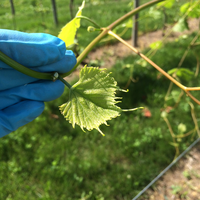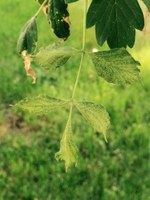Fall Lawn Weed Control
There is still time to do some lawn care this month and to make some plans for next year.
FALL is the BEST TIME of the year to control weeds in your lawn. Next year’s dandelions have germinated and right now, all weeds are moving nutrients into their roots to help them make it through the long winter. Broadleaf herbicides will also be taken to the roots. As well as being the most effective time to control weeds, a fall application of herbicide will do the least amount of damage to the rest of the plants in your yard and your neighbors’ yards since the garden plants are not growing as actively as they do in the spring. ‘Weed and feed’ products are not recommended – they're not as effective, leads to herbicide runoff and can easily track indoors.
Spring and summer are terrible times to apply weed control. Broadleaf herbicide ingredients such as 2,4-D, dicamba, and MCPP can have unintended effects away from where you applied them. First, there is physical drift: if you apply small droplets in windy conditions, the wind can move the herbicide away from where you applied it. A second effect is vapor drift: the applied herbicide volatilizes into a gas and travels away from where you applied it. If you smell herbicide, it means it is coming onto your property.
The herbicide that is applied to your lawn or the field near you can affect the young leaves of plants in the neighborhood. If applied during the spring and early summer, you and your neighbors may see plant leaf effects like these:
Grapes: Box Elder: Tomato: Source: Bugwood.org



Plants that experience repeated stress from herbicide exposure tend to be less vigorous and can die. Box Elder and Hackberry trees, which are suited to our dry climate, seem to be especially sensitive to these types of herbicides. Tomatoes, eggplants, potatoes and melons are also easily affected by drift. If your garden is heavily affected, consider whether you should eat its produce; drifted lawn and field crop herbicides are not labeled for application to food plants.
Finally, if you are applying a broadleaf herbicide that contains dicamba, do not apply it repeatedly near tree roots. Tree roots extend beyond the canopy of the tree. Dicamba builds up in the soil and kills trees in North Dakota every year.
Take Away:
- Apply lawn herbicides as little as possible each year.
- A one-time, Fall application will be most effective.
- Don’t use “Weed and Feed” products. It tracks indoors and is applied to too much of the lawn. Just spot spray where you need it.
- Spraying: Wear Boots! Wear Long Sleeves! Wear Gloves! Back AWAY from the application area – DON’T walk INTO it! READ the LABEL! UNDERSTAND the LABEL. These are not chemicals to mess around with. Don’t let your children or pets onto a lawn before it dries. Or better yet, until you’ve cut it one more time.
- It is impossible to control 100% of weeds. It is OK!
Some interesting lawn links:
Home Lawn Problems and Solutions for North Dakota
A quick overview of lawn care and weed control
Reasons to avoid ‘weed and feed’ products
Kathy Wiederholt
Fruit Project Manager


